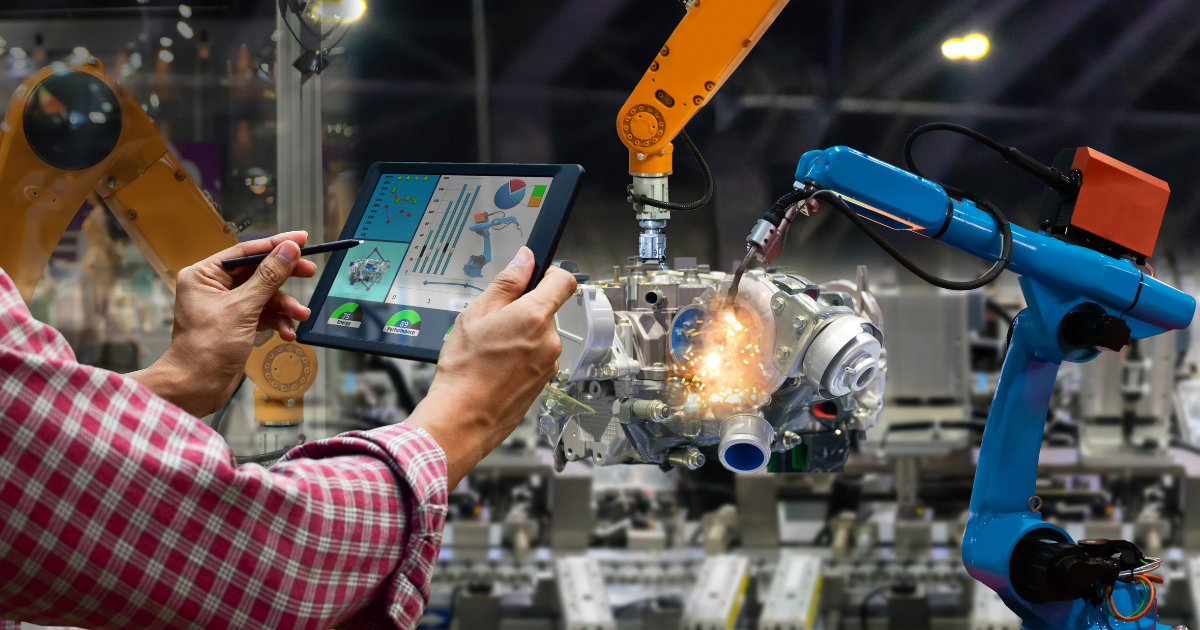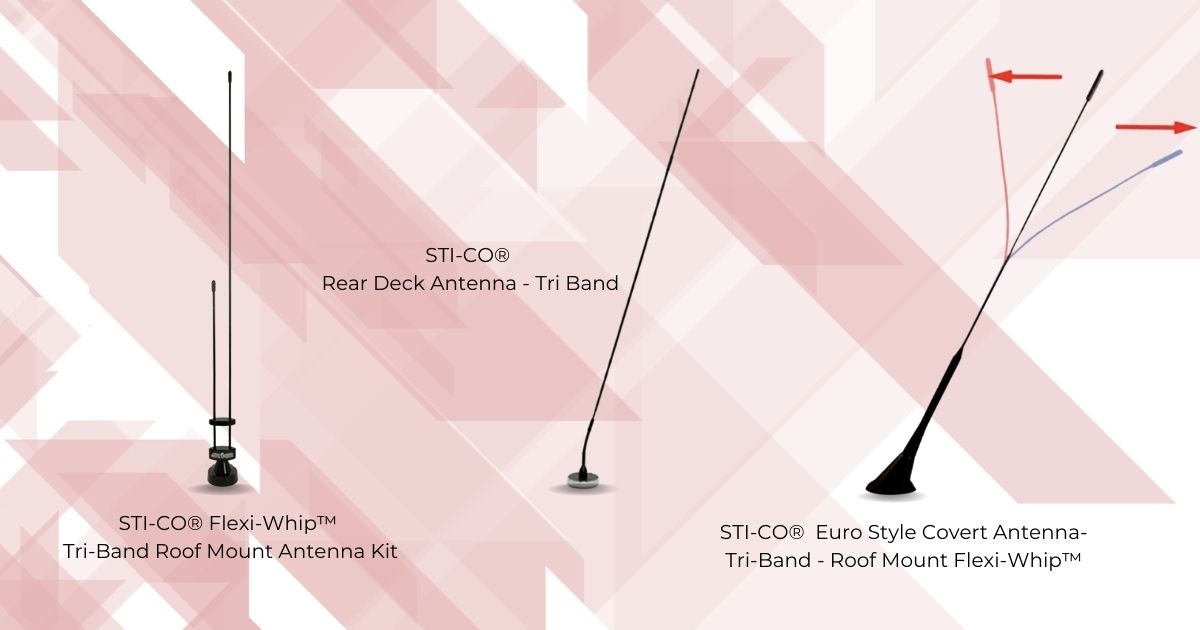5 Ways Technology is Making American Manufacturing More Efficient and Sustainable
Posted by STI-CO® Antenna Solutions on 21st Jul 2023
Today’s modern manufacturing facility is much different than the stereotypical picture one has of factories 50 or 100 years ago.
Developments in technology that drive other industries and other aspects of life also influence the evolution of American manufacturing. Current processes are constantly being updated as manufacturers incorporate new methods, tools, and approaches.
As a result, these new methods are changing the shape of manufacturing. Workers can be relieved of repetitive tasks, and productivity and precision can increase. In this blog, we’ll take a closer look at five of the innovations that are affecting American manufacturing and making it more efficient:
- Robotics and automation
- Computer aided design
- Data analytics
- Additive manufacturing and 3D printing
- Sustainable manufacturing
These methods are helping manufacturers improve their processes, increase the speed of product development, and serve their business partners more effectively.
1. Robotics and Automation
Historically, manufacturing relied upon manual labor, human operators, and traditional methods of handling production across all stages. Today, technological advancements are changing the way many products are designed and produced, as well as the way companies are being operated.
Automation involves implementing computer controlled equipment into the manufacturing process. Robots represent one type of programmable or flexible automation; these are machines that are capable of reproducing or substituting human action.
Driven by electrical power rather than muscle power, robots can handle a variety of actions that streamline manufacturing processes. They are especially well suited to pick-and-place activities, transport of materials, and repetitive operations.
The combination of automation and robotics offer several benefits to manufacturers:
- Greater consistency and reproducibility, resulting in less variation and less error
- Increased control over operations
- Better accuracy and improved quality control
- Improved efficiency that leads to higher volume production
- Shorter lead time as a result of greater efficiencies and volume
As an example, years ago, cable winding at STI-CO® was done by hand. Today, automated systems and robotics allow for faster production of high quality antennas with a reduction in the need for hands-on supervision and improved efficiency.
2. Computer-aided Design
Design was once a highly labor-intensive process. It’s a critical component in manufacturing, especially for product development, changes, and customization. Maintaining accurate documentation through every stage is also important.
Computer aided design has made dramatic changes to the design process over the years through increasingly sophisticated hardware and software technology advancements.
Software driven methods make it possible to design and create more complex products and the methods for manufacturing them. Instead of laborious hand drawings, CAD systems not only expedite the design process but can be integrated into other aspects of production flow.
The accuracy of communications has been improved by implementing CAD systems and so has the ability to design for manufacturability.
Engineers use computer aided design to rapidly produce iterations that optimize antenna and communications equipment designs much more quickly. CAD improves the types of designs that can be modeled as well as the speed of development and delivery of challenging custom applications.
CAD systems allow engineers to take client variables such as form factor, environmental concerns, and specific materials and efficiently create designs that meet and exceed those product expectations.
3. Data Analytics
In its most basic sense, data analytics refers to the analysis of large volumes of raw data. High performance computing capabilities have made it possible for manufacturers and others to capture and use vast quantities of data, and that ability is changing manufacturing operations.
Detailed analysis of machine level data can help manufacturers:
- Identify production bottlenecks
- Document performance issues
- Optimize production schedules
- Improve quality control
- Track inventory and supply chain logistics
Essentially, raw data from a variety of sources can become actionable insights to help guide and optimize decision making. By tapping this information, manufacturers can improve productivity and product function as well as overall plant operations.
4. Additive Manufacturing
Manufacturers today have access to a wide range of incredible options for creating objects through additive processes, such as 3D printing. Unlike subtractive processes that remove material during production, additive processes involve building up layers of material, with each layer being "printed" on top of the previous one, ultimately forming the desired item.
This capability has revolutionized the prototyping process for many manufacturers. Samples, models, and functional components can be 3D printed quickly and in single unit quantities for analysis and testing.
Rapidly producing a prototype improves the development time and makes the entire cycle from design to market a much quicker process.
5. Sustainable Manufacturing
Sustainable manufacturing is not just a technology but an overarching perspective that is changing practices across many industries.
The U.S. EPA defines sustainable manufacturing as “the creation of manufactured products through economically-sound processes that minimize negative environmental impacts while conserving energy and natural resources.” The EPA further emphasizes that “sustainable manufacturing also enhances employee, community and product safety.”
Falling under that broad definition, increased application of digital technology methods and lean manufacturing both support sustainable manufacturing. Sustainability encompasses improving efficiency, reducing waste, and a coordinated approach to reducing energy resource usage.
At STI-CO®, we apply lean manufacturing practices that reduce the environmental impact of manufacturing activities. This includes minimizing waste, incorporating recycled materials, and choosing energy-efficient machinery and processes. Additionally, we prioritize the durability of finished products, recognizing that items built to last require less frequent replacement.
Summary
Technology advances at a fast pace. It’s important for manufacturers to stay on top of the latest advancements in research and development in the industry and constantly assess how these advancements can be applied to improve processes.
Automation and robotics, along with computer aided design, data analytics, additive manufacturing, and sustainable manufacturing practices are serving to help American businesses thrive in the face of global competition.
The future holds many opportunities for advancement, including making the latest technology readily available to customers to support their goals. Interested in learning more about STI-CO®’s innovative manufacturing processes? Please contact STI-CO® Support at 866-307-8426, email sales@sti-co.com, or visit www.sti-co.com
Frequently Asked Questions: Sustainable Manufacturing
What is sustainable production?
Sustainable production, also known as sustainable manufacturing or green manufacturing, is the creation of manufactured goods through economically-sound processes that minimize negative environmental impacts, conserve energy and natural resources, and prioritize the welfare of employees and communities involved. This approach seeks to balance the needs of the planet, people, and profits to ensure long-term business viability and ecological health.
How do you maintain sustainability in manufacturing?
Maintaining sustainability in manufacturing involves several key strategies, including:
- Adopting eco-friendly and energy-efficient production processes.
- Investing in renewable energy sources to power operations.
- Optimizing supply chain management to minimize waste and emissions.
- Encouraging employee engagement through education and incentives for sustainable practices.
- Performing regular environmental performance audits and assessments.
- Engaging in stakeholder collaboration to foster innovation in sustainable practices.
How does sustainable manufacturing affect the environment?
Sustainable manufacturing positively affects the environment by significantly reducing pollution, conserving finite resources, and decreasing the carbon footprint of manufacturing activities. It aims to mitigate the effects of climate change by employing practices that reduce greenhouse gas emissions, enhance energy and water efficiency, and utilize renewable resources. Through these efforts, sustainable manufacturing contributes to the preservation of ecosystems, improves air and water quality, and supports the well-being of communities around the globe.
What is the future of robotics in manufacturing?
The future of robotics in manufacturing points towards increased automation, integration with artificial intelligence (AI) and the Internet of Things (IoT), and greater collaboration between humans and robots (cobots). These advancements will likely lead to smarter, more flexible, and more efficient manufacturing processes, further customization of products, and continuous improvement in safety and productivity.
What are the advantages of additive manufacturing in space?
- Additive manufacturing offers several benefits, including:
- Reduced material waste, as it uses only the material necessary to build the object.
- Enhanced design flexibility, enabling the production of complex and customized items without significant additional cost.
- Improved efficiency and speed in the prototyping and manufacturing processes.
- Potential for reducing supply chain complexity and costs by enabling local production.
- Contribution to sustainability by minimizing waste and allowing for the use of eco-friendly materials.





